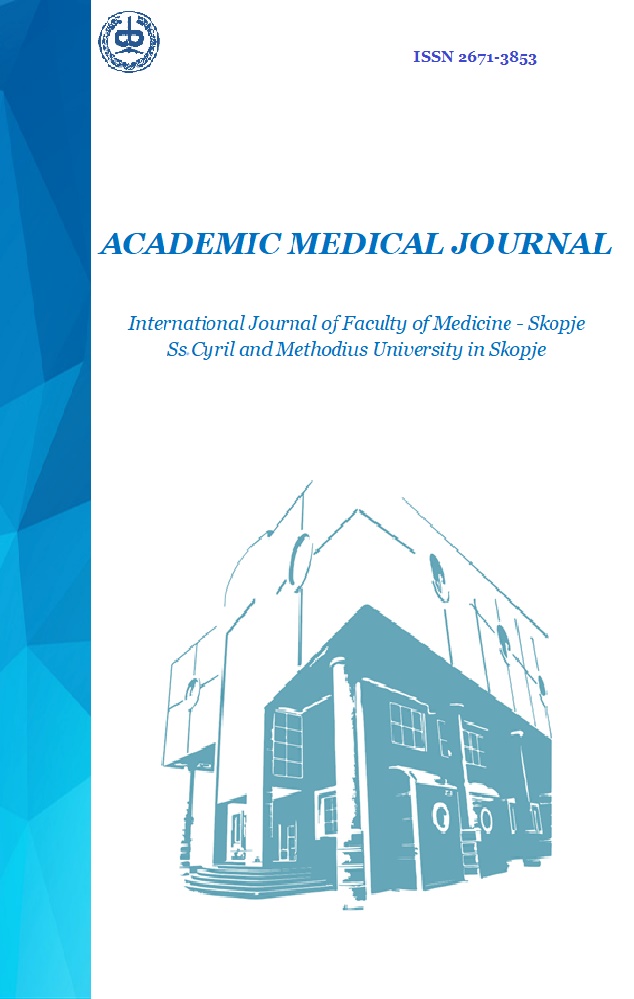THE SIGNIFICANCE OF PLACENTAL CHROMOSOMAL COMPOSITION IN THE OCCURRENCE OF FALSE POSITIVE RESULT IN NON- INVASIVE PRENATAL TESTING: A CASE REPORT HIGHLIGHTING POSITIVE RESULT FOR TRISOMY 21
Keywords:
non-invasive prenatal test, NIPT, pregnant woman, false positive result, fetus, placentaAbstract
Introductioion: The article presents a case report of a false-positive result (FPR) for Trisomy 21 (T21) identified through a non-invasive prenatal test (NIPT) during pregnancy, which may arise from biological factors that lead to discrepancies between NIPT outcomes and the actual condition of the fetus.
T21 is the most frequently detected chromosomal anomaly, constituting 30% of findings obtained through NIPT. This study investigated the clinical application of NIPT following a positive T21 result.
Material and methods: Two distinct prenatal tests were conducted for the same pregnancy. The initial NIPT employed Harmony reagents with Ariosa cell-free DNA System, and was followed with confirmatory amniocentesis which involved quantitative florescent PCR analysis. Second NIPT utilized the VeriSeq NIPT Solution V2 from Illumina and was followed with confirmatory amniocentesis analysis and placental tissue analysis post-delivery both using quantitative fluorescent PCR and an oligonucleotide array.
Results: This study demonstrated that both NIPT tests produced consistent results, thereby clarifying the notion of a ‘false positive’ result attributed to Confined Placental Mosaicism (CPM).
Conclusion: Understanding the implications of FPR for T21 regardless of the lowest risk of CPM is essential when considering diagnostic options.
References
Grabuschnig S, Bronkhorst AJ, Holdenrieder S, Rodriguez IR, Schliper KP, Schwendenwein D, et. al. Putative Origins of Cell-Free DNA in Humans: A Review of Active and Passive Nucleic Acid Release Mechanisms. Int J Mol Sci 2020; 21(21): 8062. doi: 10.3390/ijms21218062.
Abedalthagafi M, Bawazeer S, Fawaz RI, Heritage AM, Alajaji NM, Faqeih E. Non-invasive prenatal testing: a revolutionary journey in prenatal testing. Front Med (Lausanne) 2023; 10: 1265090. doi: 10.3389/fmed.2023.1265090.
Jayashankar SS, Nasaruddin ML, Hassan MF, Dasrilsyah RA, Shafiee MN, Ismail NAS et al. Non-Invasive Prenatal Testing (NIPT): Reliability, Challenges, and Future Directions. Diagnostics 2023; 13(15): 2570. doi: 10.3390/diagnostics13152570.
Rafi I, Hill M, Hayward J, Chitty LS. Non-invasive prenatal testing: use of cell-free fetal DNA in Down syndrome screening. Br J Gen Pract 2017; 67(660): 298-299. doi: 10.3399/bjgp17X691625.
Bjerregaard L, Stenbakken AB, Andersen CS, Andersen CS, Kristensen L, Jensen CV, et al. The rate of invasive testing for trisomy 21 is reduced after implementation of NIPT. Dmj 2017; 64(4): A5359, PMID: 28385172.
Liehr T. False-positives and false-negatives in non-invasive prenatal testing (NIPT): what can we learn from a meta-analyses on > 750,000 tests? Mol Cytogenet 2022; 15(1): 36. doi: 10.1186/s13039-022-00612-2.
Harraway J. Non-invasive prenatal testing. Aust Fam Physician 2017; 46(10): 735-739. PMID: 29036772.
Okoror CEM, Arora S. Prenatal diagnosis after high chance non-invasive prenatal testing for trisomies 21, 18 and 13, chorionic villus sampling or amniocentesis? - Experience at a district general hospital in the United Kingdom. Eur J Obstet Gynecol Reprod Biol X 2023; 19: 100211. doi: 10.1016/j.eurox.2023.100211.
Bonanni G, Trevisan V, Zollino M, Santis MD, Romanzi F, Lanzone A, et al. Case Report: Challenges of Non-Invasive Prenatal Testing (NIPT): A Case Report of Confined Placental Mosaicism and Clinical Considerations. Front Genet 2022; 13: 881284. doi: 10.3389/fgene.2022.881284.
Reilly K, Doyle S, Hamilton SJ, Kilby MD, Mone F, et al. Pitfalls of prenatal diagnosis associated with mosaicism. Obstet and Gynaecol 2022; 25(1): 28-37. doi: 10.1111/tog.12850.
Downloads
Published
Issue
Section
License
This work is licensed under CC BY 4.0 





